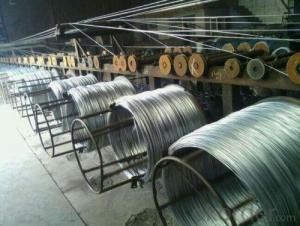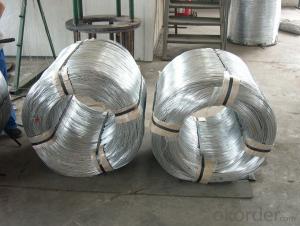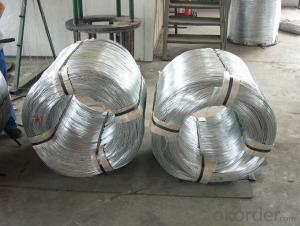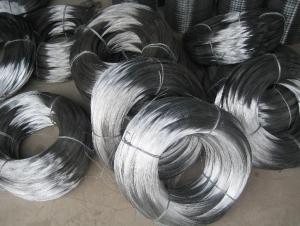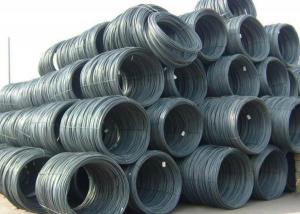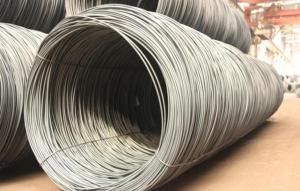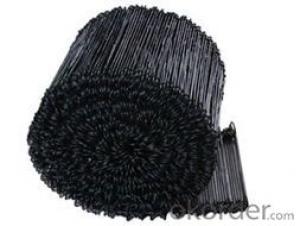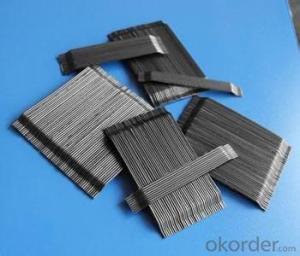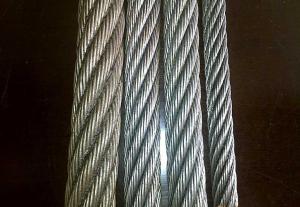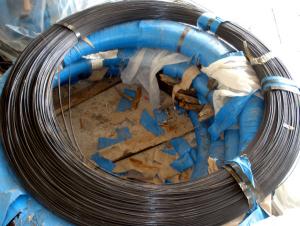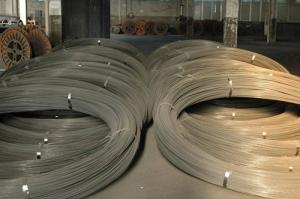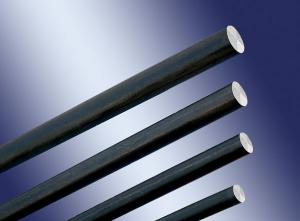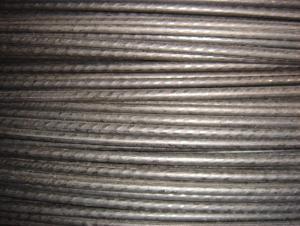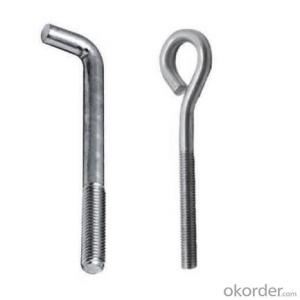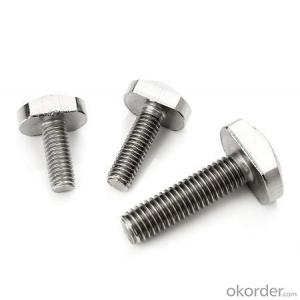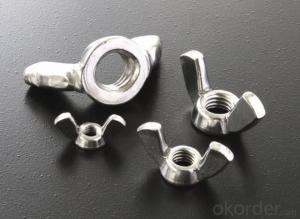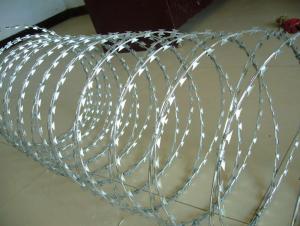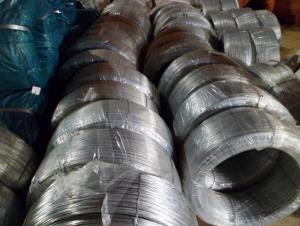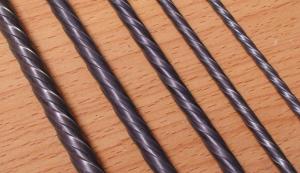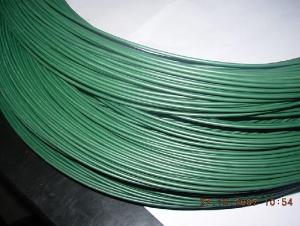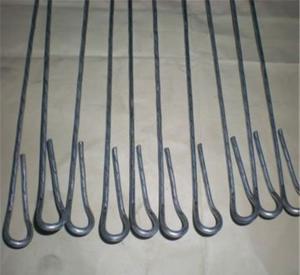Galvanized Iron Wire For Chain Llink Fence
- Loading Port:
- China Main Port
- Payment Terms:
- TT OR LC
- Min Order Qty:
- -
- Supply Capability:
- -
OKorder Service Pledge
OKorder Financial Service
You Might Also Like
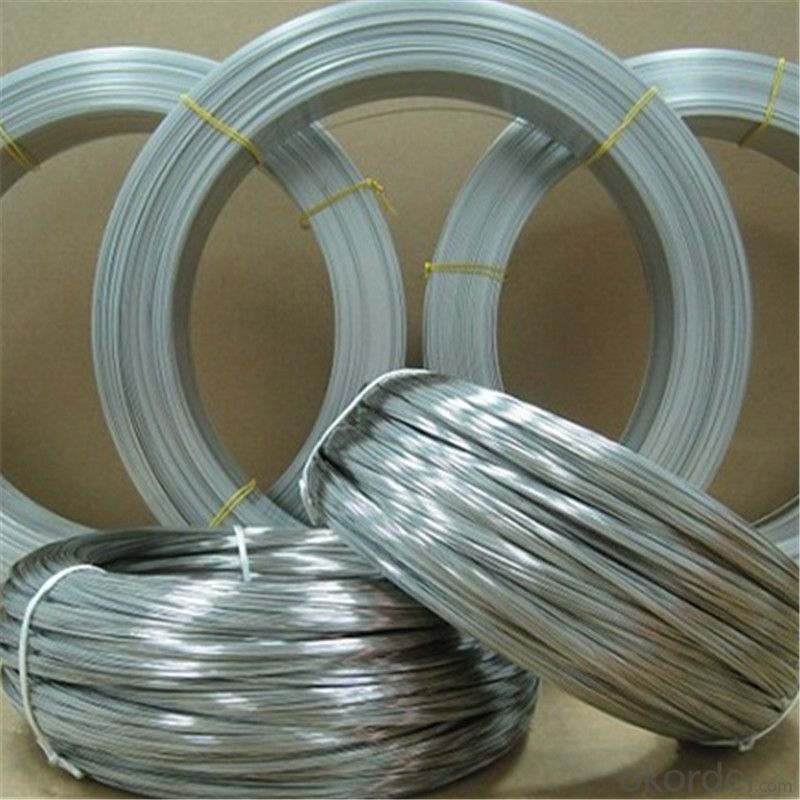
Quick Details
| Place of Origin: | Standard of Zinc Coating: | Model Number: | |||||||
| Surface Treatment: | Galvanized Technique: | Type: | |||||||
| Function: | Wire Gauge: | Standard: | |||||||
| Material: | Elongation: | Package: | |||||||
| Zinc Coating: | Application: | Used in wire mesh, artware , metal hose , binding wire | |||||||
Galvanized Wire
1.BASIC INFORMATION:
1.SPECIFICATION:BWG8-BWG32
2.WIRE DIA:4.2-0.45MM
3.ZINC COATED: 8-12G/M2(ELECTRO GALVANIZED)
4.TENSILE:350-500N/MM2
5.SURFACE TREATMENT:GALVANIZED
6.MATERIAL:Q195 LOW CARBON STEEL WIRE
2.ADVANTAGE:
OUR FACTORY HAS SPECILIZING IN THIS FIELD FOR MANY YEARS WITH THE FIRST-RATE DRAWING MACHINES AND OTHER PRODUCTION EQUIPMENTS.
AND OUR COMPANY WILL TAKE PART IN THE HARDWARE EXHIBITION EVERY YEAR.
3.PACKING:
COIL WEIGHTED 10-800KG SWAPPED WITH WAX PAPER OR CONNECTED WITH PLASTIC BELT,THEN PUT INTO JUTE BAG.AND OTHER SPECIAL PACKINGS OF CUSTOMERS WILL BE APPRECIATED WELL IMMIDIATELY.
4.USES:
USED IN COMMUNCATION EQUIPMENT,WEAVE WIRE MESH,CRAFTWORK,ETC.
- Q:DO i TWIST THE WHITE AND RED SMALL WIRES TOGETHER UNDER THE WIRE NUTS ON AC WIRING TO THE CONDENSER?
- Hi, Always fun to work with electric. Take a look at the wires that you have. You should have the wires that come out of the condenser and then the wires that go to the condenser from your circuit box. White will usually go to white and red to red/black which depending on age of wiring can be the same. This being the case your white should go to white and the red should go to red/black. This should bring power to your unit. If you plan to keep doing this sort of work a mid-range electrical tester really helps especially telling you if something is still live and able to zap you...
- Q:When I am wiring my sub to my amp, what gauge of wire should I use? The sub is 750 rms and the amp is 700 rms. And how do I wire a 2 ohm sub DVC to a 2 ohm stable amp?
- the present passing for the duration of the wires will reason the wires to warmth up if no longer sufficient guage. think of of the hundreds of thousands of little electrons pushing and shoving returned and forth, all this action motives friction on a molecular point and of direction all of us understand friction equals warmth. In a bigger guage twine there is extra area for the comparable form of electons. it truly is truly that straightforward. Use as heavy a guage speaker twine which you would be able to. you will have no sign loss and little warmth.
- Q:I think I have heard about flat cable wires?maybe even flat electrical wires.where you can hide them behind a base board.is this true?what are they called/thx
- flat co-ax cable would be an oxymoron, however there is flat twinlead. U need to know that twinlead is more likely to have interference problems though. electrical cable usually has 3 conductors so it is naturally kind of oval shaped people typically hide these behind baseboard or in the space below the baseboard if they have wall to wall
- Q:(PRIOR TO READING, I SUGGEST YOU LOOK AT THE IMAGES AS IT WILL MAKE THINGS A WHOLE LOT EASIER TO UNDERSTAND)I purchased 2 neons from Repco. That run off your cigerette lighter with an adaptor. They worked fine, until my friend got in my car, and accidentally dropped something on the adaptor which caused it to malfunction, and bam, my in-car neons (placed up under the dash, near where your feet rest) went out.
- wire is wire. If it really is silver then theoretically it should conduct electrcitiy better than copper. But that doesn't really matter much. wire is wire. all it needs to be able to do is carry the electrical current. If wiring truly is your problem, then that will work fine.
- Q:So basically my i have a ps3 wired controller but the problem is the wire any jerks or movement at all and it will shut off and i have to repeatedly press the home button to turn it on i am 100% sure its the wire any ideas on how to fix this problem?
- It sounds like the wire is loose. To fix this, you'll have to open up the controller and reattach/secure it. If the wire is exposed and is frayed, you'll probably have to get a new controller. This is very broad because you didn't specify the model of the controller. Some of the wired controllers use the normal Ps3-USB wire, while others do not. So, trying opening it up and securing the wire. If you're lucky and it's a Ps3-USB wire, replace it with a new wire. Otherwise, you'll have to get a new controller if you can't fix it.
- Q:Why is it that some wires get hot,having electricity flow throught them,while others don't?And why is it that when there is a lot of resistance in a wire, that it doesn't get hot?Why does the length of a wire has an effect on the temperature of that wire, and how exactly?
- Well it depends. If you varry the current the temperature of the wire will also vary. You have to take into account the actual diameter of the wire, the wider the wire, and constant current, the cooler the wire will be when you run electricity through it. If you have a wire with HIGH resistance it will get HOTTER, thats how light bulbs work.
- Q:my rabbit is chewing wires and in one area in my room there are like 300 wires i was just wondering if i can spray something on the wires cause i thought i saw something that said that please help!!!!
- You need to block off the whole area. Some rabbits actually like the taste of the bitter sprays, so they aren't that effective.
- Q:Hello, I have a 4 year old Trane XR12 unit. Recently the compressor fan is noisy, and now stops when when under power after 5-10 min. The main fuses and breakers are fine, the fan spins freely when turned, the contactor pulls in fine, the dual capacitor checks out. But, the wiring of the capacitor does not match wire diagrams. Could this have caused the fan motor to prematurely fail?..............................Terminal: C red wire, FAN brown wire, HERM has both orange and purple. Schematic shows the purple wire should be with red wire on common C. The purple also leads to fan.
- Hi, I looked at the schematic on-line. If you still have the original fan motor in the unit then you are correct. The center terminal on the capacitor should have the red wire from the T1 terminal of the contactor, the red wire from the compressor, and the purple wire from the fan. The FAN terminal should have the brown wire from the fan. The HERM terminal should have the orange wire from the compressor. The black wire from the fan and the black/blue wire from the compressor should lead back to the T2 terminal of the contactor. Again, that is if the motor is the original motor. If it was replaced at some point in time, the wiring colors can change from manufacturer to manufacturer, in which case it's possible that the new motor is wired correctly. There should be a diagram on the motor to show you the correct wiring configuration.
- Q:I'm doin this thing where I need to connect some wires and one part uses Apple iPod headphones. Inside those wires, they have insulation. I burnt the wires so the insulation would not be in the way. Will the wires still conduct the electricity? Or will I just need to find some other headphones without insulation to do this with?
- It would help to know exactly what you're trying to do here. Like Gary said, I'm not sure what you mean by inside those wires they have insulation. I'm trying to guess what you're trying to do here and you say you need to connect some wires. Are you trying to connect two sets of insulated wires together? If so, I'm guessing that you needed to strip the insulation off of the ends of the wires to expose the conductors and connect together? If that's the case, usually we use a wire stripper or a small razor blade to cut the insulator around the wire and then pull off the sheath, leaving clean wire underneath. Burning the insulation off is not going to make copper wire not work (if you oxidized the copper, you'd have to heat it way hotter than a typical flame, and it would not be metal any more--it would be crispy). So if you still have flexible metal left over after burning off the insulation, then you still have a conductor. The problem, and the reason why we don't usually burn off insulation is that you're going to end up with a bunch of burnt up goo and oxides on the surface of your wire which will make it not connect well with another wire surface to surface. You can probably solve this problem by lightly sanding or scratching the burnt parts of the wires. Or just cut off the burnt part and try stripping it with a blade instead. Then make sure to insulate your connection with electrical tape or something so that you don't have bare wires that can touch each other and short out. If you're trying to do something different, please explain more. In general, though, you're not going to ruin copper by burning it, but you will tend to coat the outside of the wire with stuff that doesn't insulate well. You want shiny copper when you are connecting two pieces together.
- Q:Okay, I just started tearing into my partially finished basement of the home I bought last week. Some of the electrical wiring is interesting to say the least.I have a junction box in the basement. One wire connects directly to the panel, another out to an outlet, and the third goes up and out to half the house. All of this is 14/2 except the quot;thirdthat runs up and out. This is wired with 14/3 but the third wire isn't connected to anything. Should I be concerned considering every outlet in the house works?
- I'm going to contradict some other answers here... Your handyman is wrong about being able to easily add a grounded receptacle (another reason why 'handymen' should not be touching electrical work). Please hire a licensed electrician for electrical work. The metal jacket on old BX cable is NOT approved as a grounding means. This is known in the National Electrical Code as Type AC (armored cable) wire. The old BX version of this does not meet the specifications called for by current codes. Therefore its metal jacket cannot be used as a grounding means. Since you do not have a grounding means at the receptacle, the only Code-approved replacements are either a non-grounding receptacle (2-prongs), or a GFI receptacle that is marked as No Equipment Ground on the cover plate. Unfortunately, neither is likely to solve your particular problem. The surge protectors usually have to be grounded to perform their job and even installing the GFI will not give you one. I'm afraid that your only good answer is to have a licensed electrician run a new wire and install a new receptacle for you. UPDATE: Sorry Fred, I will not put my code book away. I make part of my living fixing the work of handymen who thought they knew what they were doing. This is the second time, recently, that I have seen you giving out bad electrical advice that you are obviously not qualified to give. Please stop before someone gets hurt from your advice. I wish I could give your update another thumbs down.
1. Manufacturer Overview |
|
|---|---|
| Location | |
| Year Established | |
| Annual Output Value | |
| Main Markets | |
| Company Certifications | |
2. Manufacturer Certificates |
|
|---|---|
| a) Certification Name | |
| Range | |
| Reference | |
| Validity Period | |
3. Manufacturer Capability |
|
|---|---|
| a)Trade Capacity | |
| Nearest Port | |
| Export Percentage | |
| No.of Employees in Trade Department | |
| Language Spoken: | |
| b)Factory Information | |
| Factory Size: | |
| No. of Production Lines | |
| Contract Manufacturing | |
| Product Price Range | |
Send your message to us
Galvanized Iron Wire For Chain Llink Fence
- Loading Port:
- China Main Port
- Payment Terms:
- TT OR LC
- Min Order Qty:
- -
- Supply Capability:
- -
OKorder Service Pledge
OKorder Financial Service
Similar products
New products
Hot products
Related keywords
